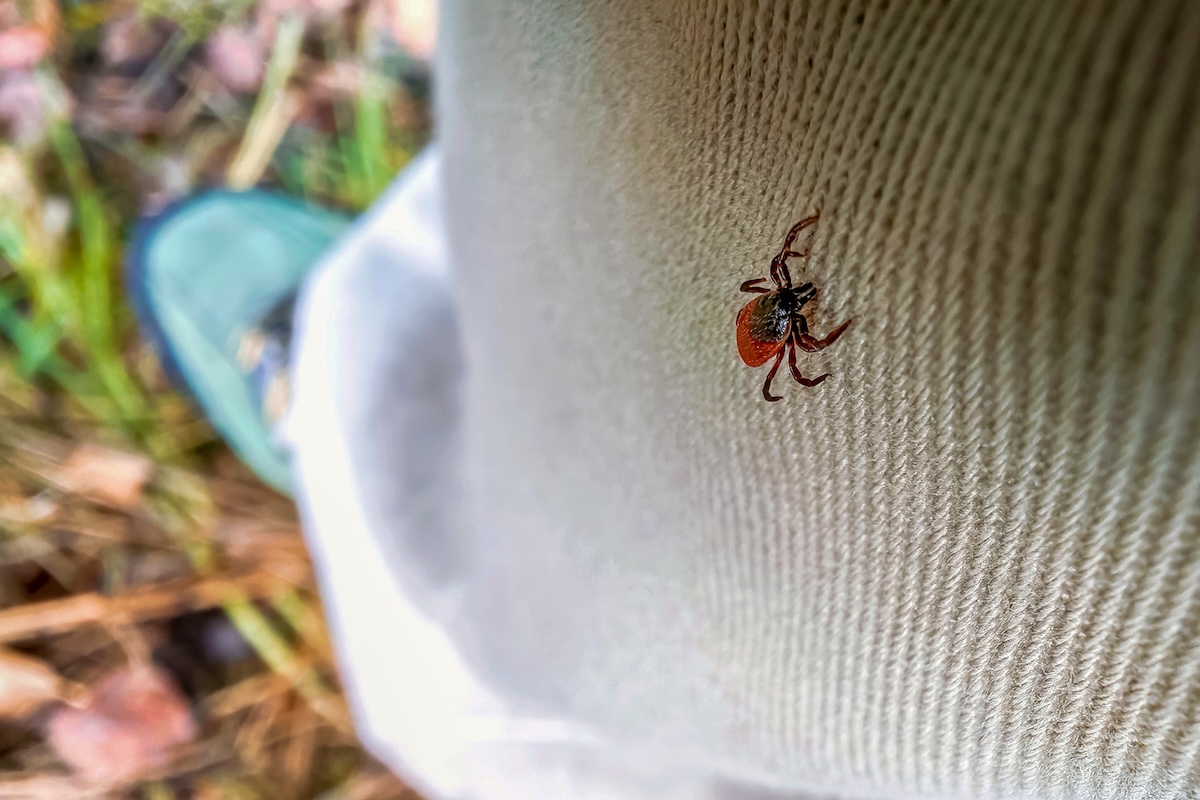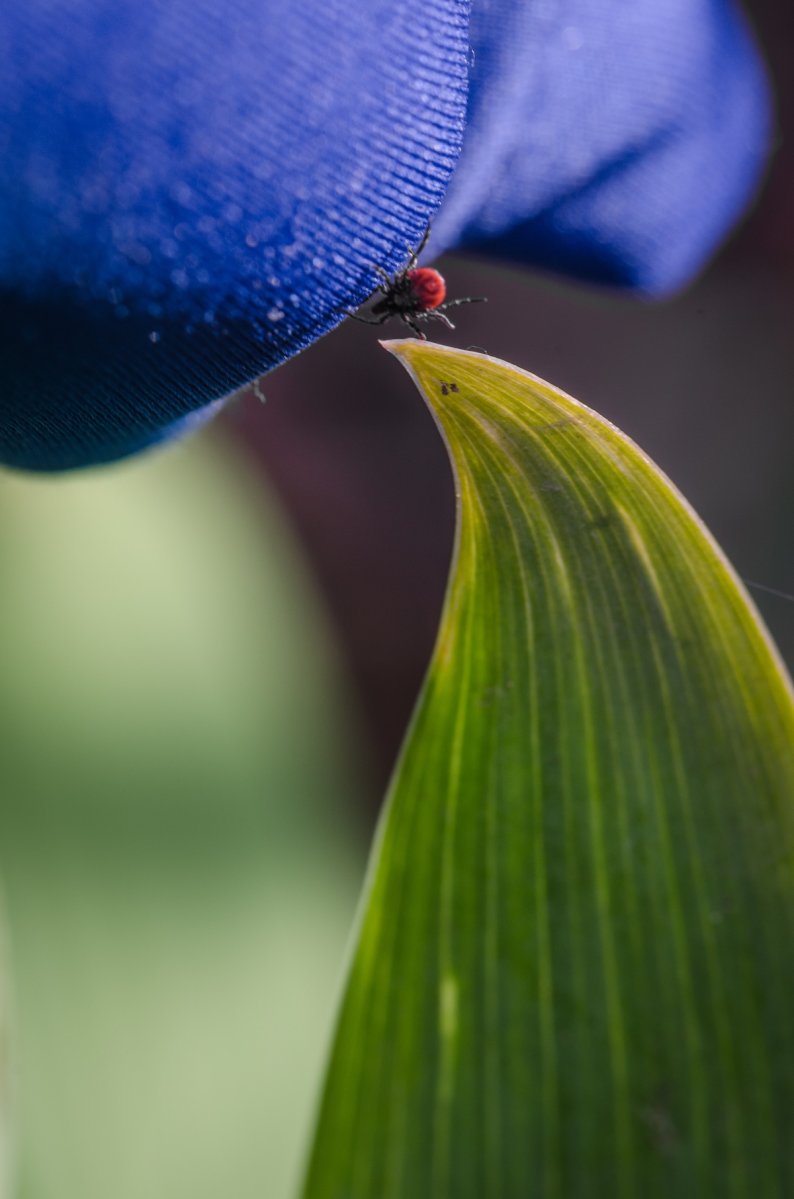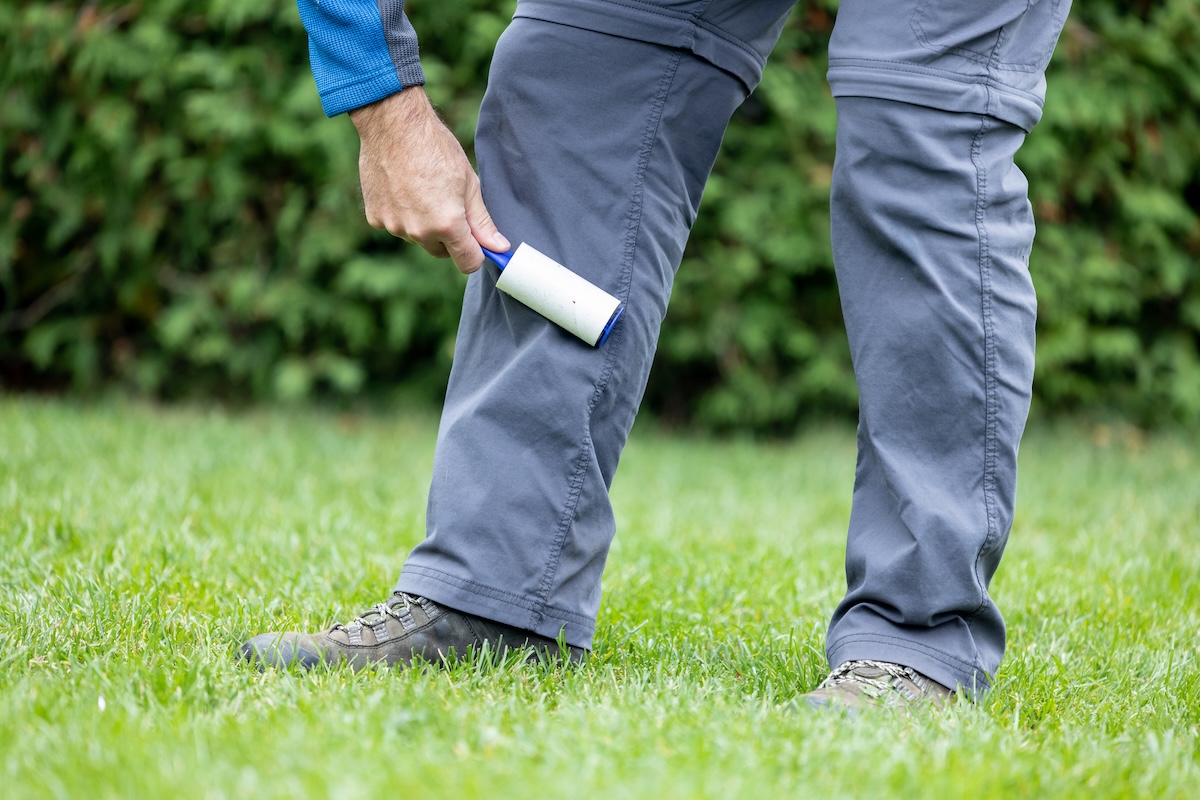

We may earn revenue from the products available on this page and participate in affiliate programs. Learn More ›
Finding ticks in the garden is one way to put a damper on your relaxing outdoor experience. The warm, wet weather in the summer tends to attract ticks, but they can appear year-round, depending on where you live. In fact, scientists are warning of tick populations exploding at alarming rates even in areas that didn’t see them before, mainly due to climate change. Deer ticks are expanding north; the longhorned tick is expanding westward; Gulf Coast ticks are moving north; and the lone star tick is moving north even into Canada. Unfortunately, ticks are also staying active for a much longer period.
These tiny blood-feeding pests can carry a variety of diseases—including Lyme disease, babesiosis, anaplasmosis, and Rocky Mountain spotted fever—that can cause serious health problems. It’s more important than ever to take precautions to protect yourself against tick bites.
We consulted gardening expert C.L. Fornari of Cape Cod, Massachusetts—a gardening book author, industry speaker and lecturer, and host of The Garden Lady radio show—about the top tips home gardeners can try to deter ticks and avoid tick bites in the garden this summer and fall. As Fornari says, “I live in ‘tick country’ on Cape Cod, where the saying is ‘Just one bite can change your life.’”
Create a tick-free zone.
One of the first steps you can take to deter ticks is to create a tick-free zone in your yard, including around your garden. Keep this checklist handy as you set up your garden and maintain your landscape throughout the year.
- Choose a spot for your garden away from wooded areas.
- Remove leaf litter and wood piles.
- Mow your lawn frequently.
- Clear away tall grasses and brush like honeysuckle around your home and the perimeter of your property.
- Install a fence around your yard to keep deer away, since they are a common tick carrier.
- Create a 3-foot-wide barrier of wood chip mulch or gravel at the edge of your property if it borders woods.

Wear protective clothing outdoors.
With tick populations increasing, choosing the right clothes when you are outside working can help you from picking up ticks in the garden. Cover as much skin as possible with long pants, long sleeves, high socks, work boots, and a hat. “Wear long pants and tuck them into your socks before you go out to work in the garden,” suggests Fornari. “It may not be the most chic fashion statement, but it’s a practical way to prevent ticks from crawling up your legs.” She also recommends wearing light-colored clothing so you can more easily spot any ticks crawling around.
It’s also beneficial to purchase protective clothing treated with 0.5 percent permethrin, a commonly used tick pesticide, according to the U.S. Centers for Disease Control and Prevention. You can also treat clothing, boots, and other gear yourself, but never use this chemical on your skin. “Spray the bottom of your pants and socks with a permethrin; when used on your clothing it’s effective and doesn’t come in contact with your skin,” says Fornari.
Finally, keep your hair tied back and avoid wearing open-toe shoes or walking barefoot outside.
Spray tick repellent on your skin.
Besides treating your clothing with permethrin, you can apply insect repellent directly to your skin for additional tick protection. It’s particularly helpful to spray your legs and ankles since these areas of your body are more likely to come in contact with ticks while outdoors. Consider choosing Environmental Protection Agency (EPA)-registered insect repellents that contain DEET, picaridin, IR3535, oil of lemon eucalyptus (OLE), para-menthane-diol (PMD), or 2-undecanone. Refer to EPA’s helpful search tool to find the best product for your needs.
Follow instructions on the bottle carefully, including safety cautions for children under 3 years old. Keep in mind that most repellents need to be reapplied every 2 to 3 hours. Effectiveness will depend on the air temperature, your physical activity, how much you perspire, and any exposure to water while wearing it.

Grow plants that deter ticks naturally.
You can also create a natural tick barrier around your home by planting certain herbs and flowers that ticks hate. For example, the kitchen herb rosemary has a strong scent that confuses ticks and keeps them from finding new hosts like deer. Fresh mint varieties like peppermint and spearmint smell amazing but can help deter ticks. Lemongrass brings that citronella power that bugs can’t stand, while fragrant lavender repels ticks and deer while attracting butterflies to your garden. Finally, bright marigolds contain pyrethrum, the same chemical found in commercial bug sprays. Just make sure to avoid plants like Japanese barberry that actually give ticks the perfect spot to hide.
Remove and clean clothing immediately.
When you come in from the yard or garden, immediately take off all your clothes and put them in the laundry, even if you intend to go back out after lunch, says Fornari. “Never reuse clothing from one day to the next. Ticks can be in what you’ve worn the day before,” she says. “Put all clothing in the laundry after you come inside.
If you don’t want to wash your clothing, put it in a normally warm dryer for 30 minutes before you wear the clothing again.” The CDC also recommends gardeners shower soon after being outdoors; washing off within 2 hours has been shown to reduce the risk of contracting Lyme disease and possibly other tick-borne diseases like babesiosis.

Conduct a thorough check for ticks.
The final step is to examine yourself for ticks, says Fornari. “Should you live alone, be sure to have a full-length mirror that you can use to do a tick check on your back,” she says. Check your clothing and gear, as ticks can ride into your home on these items and then attach to a person later. Do a complete body check by both feeling for ticks and a performing a visual inspection of the following areas:
- Under the arms
- In and around the ears
- Inside the belly button
- On the back of the knees
- In and around hair
- Between the legs
- Around the waist
If you find ticks, remove them immediately. Grasp a tick between its head and your skin with tweezers and pull straight with a gentle but firm motion. “If you have aches, fever, night sweats, or other flu-like symptoms, don’t assume that it’s just a common virus,” warns Fornari. “Ask your doctor or a local urgent care clinic for a tick panel blood test.”
